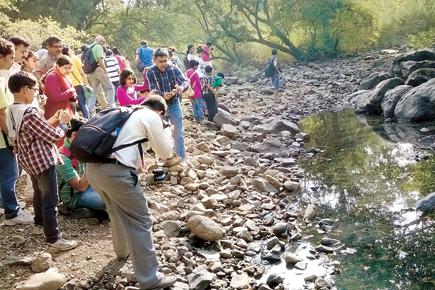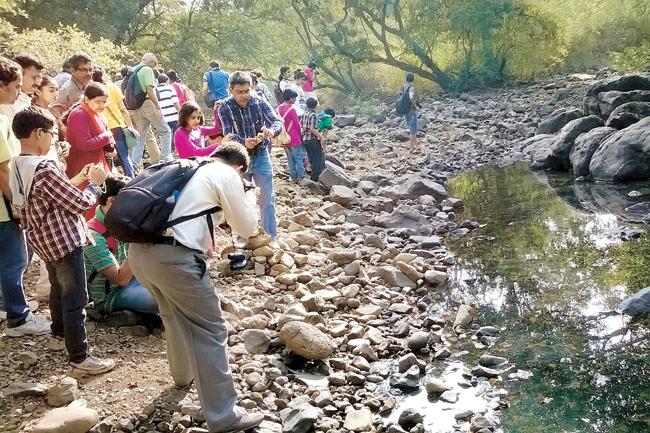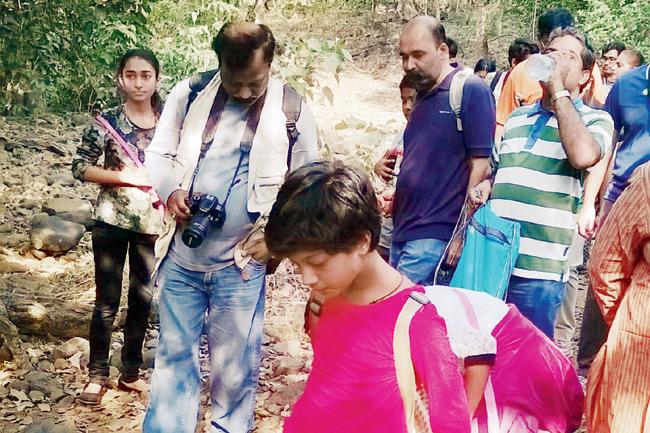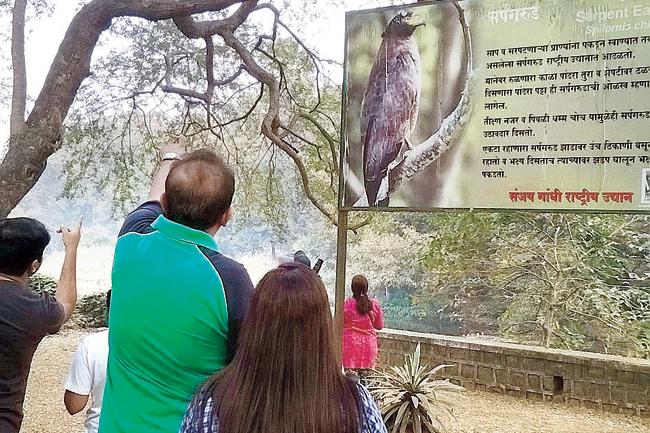The Sanjay Gandhi National Park (SGNP, popularly called Borivali National Park) at 7 am is full of people taking brisk walks, walking their pets or cycling. Few like us decided to explore the Shilonda Trail for an escape into the wild

T he Sanjay Gandhi National Park (SGNP, popularly called Borivali National Park) at 7 am is full of people taking brisk walks, walking their pets or cycling. Few like us decided to explore the Shilonda Trail for an escape into the wild.
ADVERTISEMENT

The trail is a great way to understand the flora and fauna that abounds in a forest that is so close to Mumbai
The motley group had gathered near the ticket counter, waiting for Rahul, our guide from the Bombay Natural History Society (BNHS). Our group included several kids with their parents. The youngest was a five-year-old girl, who was armed with binoculars and a reference book on birds. SGNP houses the largest population of leopards in Western India, and the Shilonda Trail (4 km), a leopard trail, opens only twice a year — in January and when it rains. As we walked through the fine mixed forest dominated by bamboo and trees, the forest bed crackled under our feet with dried leaves, twigs and tree roots. It is amazing that the park, which is a home to over 1,000 plant species, 251 species of migratory land and water birds (many endangered), 50,000 species of insects and 40 species of mammals, is in the middle of a mega city.

The Sanjay Gandhi National Park is home to many flowering trees and bushes, especially orchids. “The presence of an orchid means high level of oxygen,” our guide informed.
The trek began with spotting birds, identifying their calls, identifying trees and their special features and spotting different kinds of rare butterflies. We spotted two species of sun bird, the majestic white-bellied sea eagle, the kingfisher, and drongos. The continuous calling of large Green Barbet, the wildly screeching parakeets, the metallic calls of the Racket-Tailed Drongo, and the familiar refrain of the Spotted Babbler delighted everyone.
Flowers were examined and spider webs were looked on with interest as were the Pagoda Ant nests and the termite anthills. The fun was to spot and identify animals’ pugmarks. The kids were keen to find their own set of pugmarks and hoping to accost a leopard. We spotted none.

Though, all the rules of walking, watching, touching and not-touching had to be followed, the dried leaf-dusted roads were invigorating. The easy trek ended at the first stream. On our return, we spied on the Spotted Chital. A fitting end to our wild encounter.
 Subscribe today by clicking the link and stay updated with the latest news!" Click here!
Subscribe today by clicking the link and stay updated with the latest news!" Click here!






